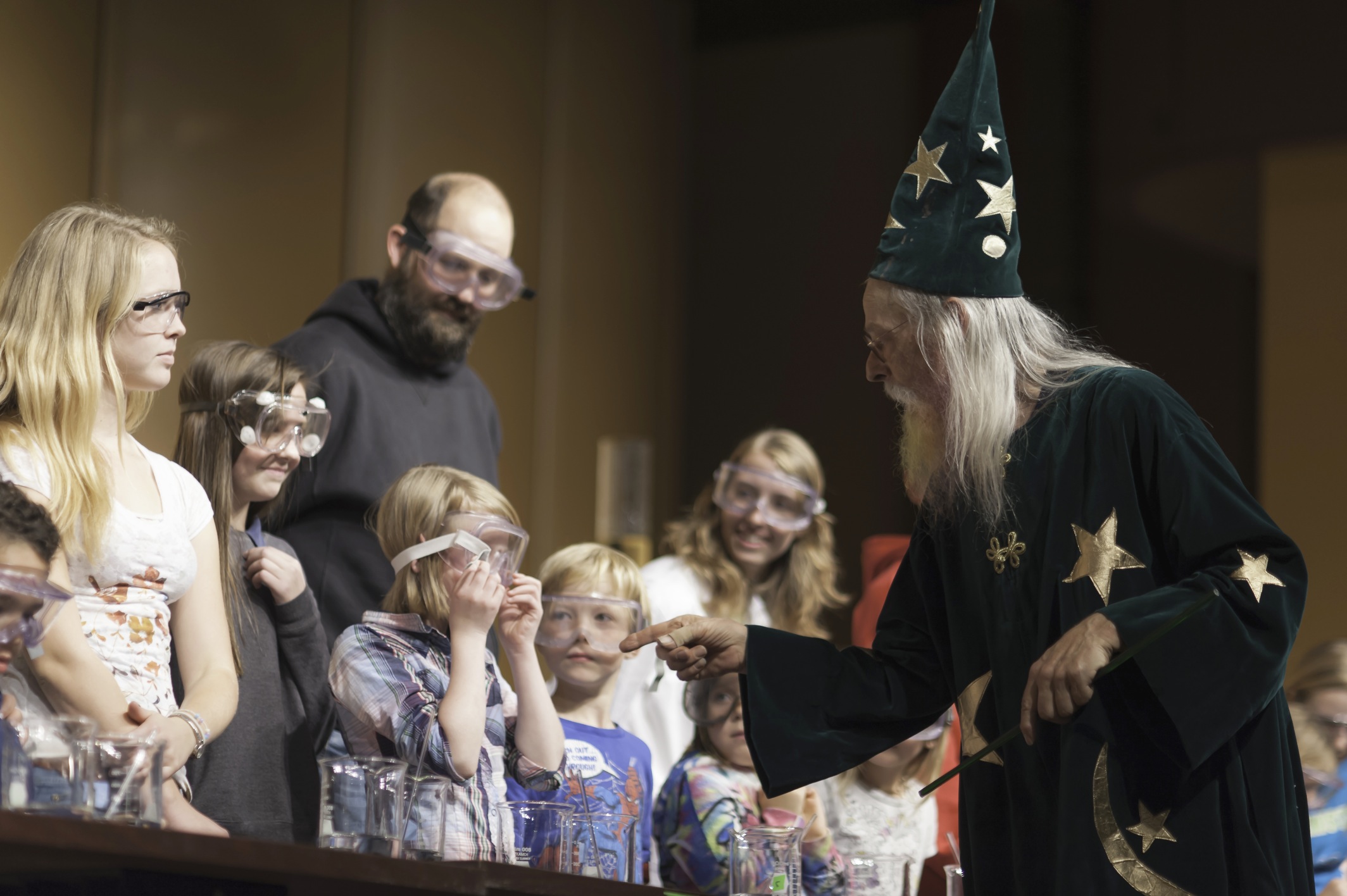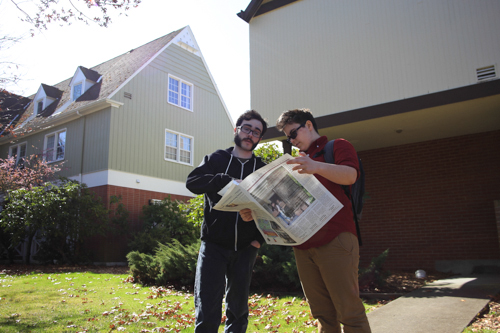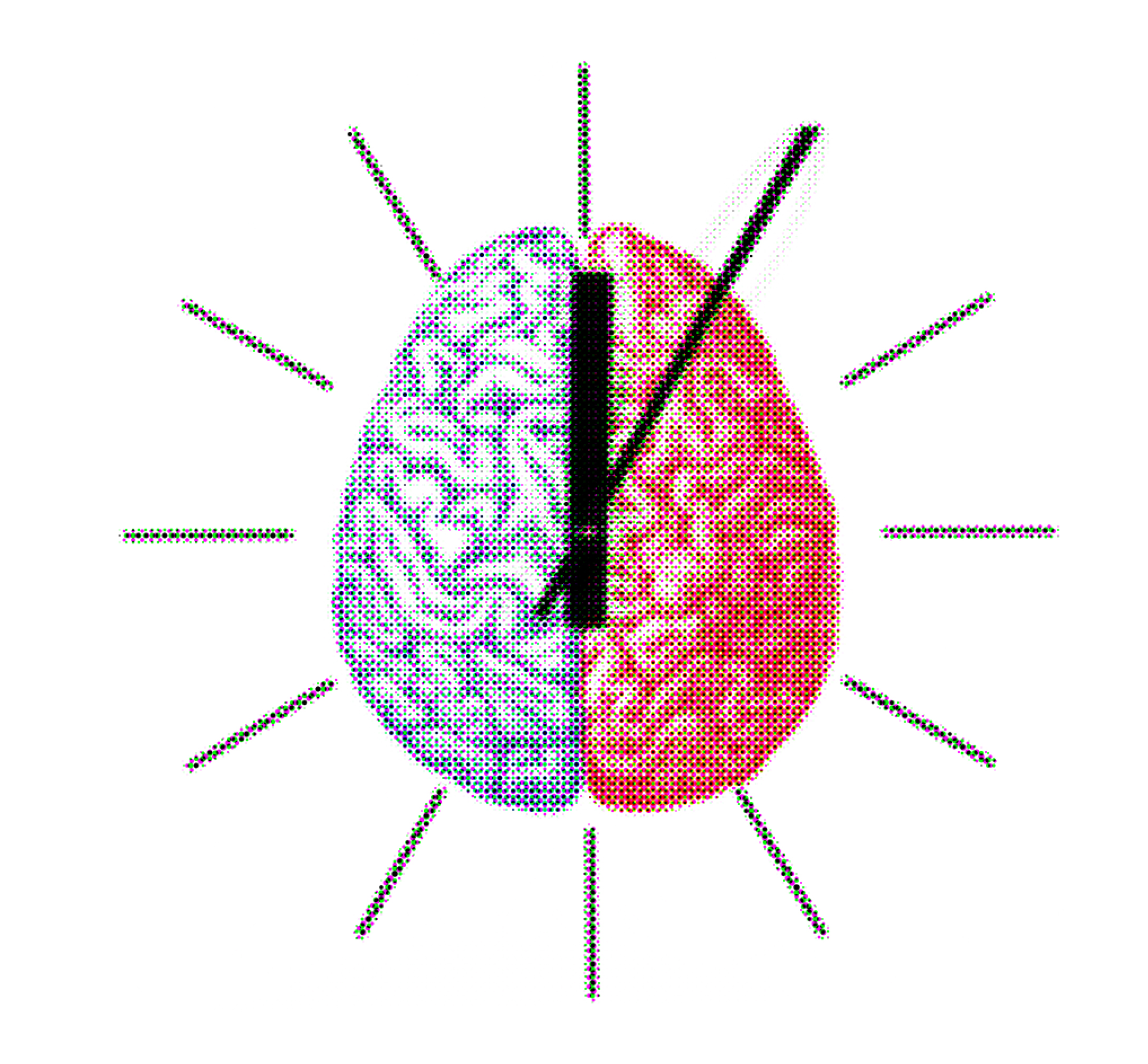
The chemistry department’s Magic Show has, for the 22nd year, managed to entertain and amaze audiences of all ages. Performed and put together by Professors Tim Hoyt and Johanna Crane, the show consists of several chemical reactions and demonstrations, all of which involve luminescent colors, fire and loud explosions. The show took place on Schneebeck Concert Hall’s stage. Onstage were beakers, flasks, goggle-clad students and Hoyt, also known as “the Wizard.”
Hoyt was dressed in a purple cloak and a purple hat (later green in a mid-show costume change) bedecked in silver stars and moons, his white beard dyed rainbow colors and a wizard’s wand replaced his stirring rod.
Much of my time before the show began was spent debating with my friend whether we should call this wizard Gandalf or Dumbledore.
Before the experiments began, Hoyt noted to the audience his emphasis on his students’ safety (despite his lack of protective gloves or goggles) and suggested that the parents cover their children’s ears for the loud explosions, rather than their own.
He made jokes throughout the show and only briefly explained the chemical workings of the experiments so as not to lose the audience’s interest.
Almost every demonstration had musical accompaniment, and with the help of Crane, the Wizard made the show, for lack of a better word, magical. Some demonstrations, like the “Blue Moon,” showed off chemistry’s flashy colors.
This experiment in particular involved little more than a flask filled with ammonia gas, and yet it was able to produce a hazy blue color within the circular flask. And to add to the entertainment, “Blue Moon” by Sha-na-na played as the blue moon glowed.
While the colorful experiments were aesthetically pleasing, the exploding experiments were, shall we say, aurally stimulating.
At many points in the show, Hoyt and Crane asked audience members to cover their ears or retrieve earplugs from the front of the stage.
The closing experiment consisted of exploding balloons set to the tune of Jerry Lee Lewis’s “Great Balls of Fire,” each one making a boom louder than the last. Including other experiments like the “Whoosh Bomb” and “Pop Bottles,” the show certainly produced a lot of noise.
With entertainment like that, it is no surprise that many children were also in attendance for the magic show. Much of the audience consisted of Puget Sound students—a few were also involved in the show itself—but there was a fair number of young children with their parents.
Hoyt and Crane did not ignore this, and allowed the children to participate in an experiment.
They formed them into groups and mixed together a solution that turned the liquid in the flasks black in time to Rossini’s “William Tell Overture,” making it exciting to participate in and to watch.
The involvement of the children in the audience highlighted the students’ involvement as well. Often, students went onstage to clean up or move around beakers, and they sometimes were actively involved in the experiments.
Two students, punctuating their act with chemistry jokes and puns, showed their own demonstration as they electrocuted a pickle. Hoyt himself credited the students for their hard work on the show, and at the end, everyone involved had a chance to take a bow before the audience’s enthusiastic applause.
Two times during the show, an unnamed sunglasses-wearing man—according to him, his “name is not important”—talked about the Dead Chemists Society.
Because the Dead Chemists Society requires one to be a chemist and deceased, which many Puget Sound students are not, this man encouraged students to participate in Puget Sound’s chapter of the Student Affiliates of the American Chemical Society (SAACS), which is the University’s Chemistry Club.
The Chemistry Club gets involved on campus by tutoring first- and second-year chemistry students, selling lab notebooks and assisting in this Chemistry Magic Show.
Overall, the Chemistry Magic Show had a large turnout and was a huge hit.
And as with many events on our campus, it left a message emphasizing both student involvement and inclusion of the Tacoma community as a whole.
PHOTO COURTESY / LAURENCE STACK


